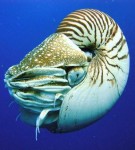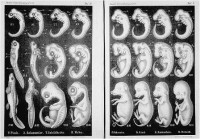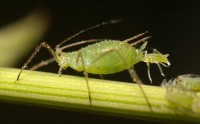By Creation Moments Just about everybody has seen a Swiss army knife. This tool is much more than a knife and has all sorts of other devices tucked away in its handle. read more …read more Read more here: Creation Moments
By Creation Moments The ability to control someone else’s will is the stuff of classic horror movies. Thankfully, science has never devised a way whereby one person can take over another person’s will and control their every action. But there is a certain parasitic wasp that may, in fact, be able to control the actions of the aphid that it uses. read more …read more Read more here: Creation Moments
By Creation Moments The thorny acacia tree is not the usual food of the Kudu antelope. But because of overcrowding on game farms, the antelope began eating the leaves of this tree. Eventually, the kudu starved to death, even though there were plenty of acacia leaves to eat. Scientists learned that when antelope feed on the acacia, the tree begins to produce a chemical called tannin k. read more …read more Read more here: Creation Moments
Listen Now. On this episode of ID the Future, hear the final segment of Casey Luskin’s conversation with Dr. Michael Egnor. Dr. Egnor discusses how the Judeo-Christian society supported the rise of modern science in the 16th and 17th century, refuting the view that science is incompatible with religion and that the rise of atheism has been the rise of science.
By Creation Moments It is a common perception that scientists are totally objective and impartial in their search for the truth. If a scientist says so, it must be true! Even among themselves, leaders of their field are jokingly referred to as the “high priests of science.” read more …read more Read more here: Creation Moments
By radio@answersingenesis.org (Steve Ham) How Should We Understand the Goodness of Creation? …read more Read more here: Answers Conversation
By Creation Moments Just how good are those radiocarbon dates? When reporting an exciting archaeological discovery, popular science magazines tell the reader, for example, that some man-made artifact is 40,000 years old. A few years ago it was common to find tolerance figures such as plus or minus 1,500 years attached to these ages. These tolerance figures effectively leave an impression of objective precision in the mind of the reader. Those tolerance figures are seldom used today. read more …read more Read more here: Creation Moments
By Creation Moments While the nautilus is a familiar sea creature that lives in a shell, it is actually more like the squid and the octopus. Like the squid and the octopus, the nautilus has a well-developed nervous system, mouth, eyes and tentacles and can swim backward quite rapidly by shooting jets of water. It also builds itself a shell home in which to live. read more …read more Read more here: Creation Moments
By Creation Moments James Clerk Maxwell was a Scottish physicist and professor at King’s College, London, and then at Cambridge University. Albert Einstein said that Maxwell had made a greater contribution to physics than anyone except Isaac Newton. Maxwell developed complex theoretical and mathematical explanations for all the forces in the universe except gravity and nuclear forces. read more …read more Read more here: Creation Moments
By Creation Moments Many creation supporters are Christians that are also interested in ancient history and like to read about the latest archaeological discoveries. However, they are concerned when, say, some very ancient remains are carbon-14 dated at forty or even fifty thousand years old. According to the Bible, the Creation itself is no more than 10,000 years old, so how does the Bible-believing Christian handle this kind of information? read more …read more Read more here: Creation Moments
By Creation Moments Accepting that God created man, did He create a non-material part within him we call the soul as well as the familiar material body? Of course, the Bible has a lot to say about man’s soul and that following a person’s death, the soul of the faithful will be with God in heaven. However, there are others who regard the idea of a soul as nothing more than a superstition. read more …read more Read more here: Creation Moments
By Creation Moments In 1969 Dr. Dean Kenyon, then professor of biology at San Francisco State University, published a book that left him recognized as one of the leading evolutionary scientists. His book, Biological Predestination, tried to explain how simple living things could, over millions of years, become more complex, and finally evolve into human beings. read more …read more Read more here: Creation Moments
By Creation Moments The electron microscope was developed over 80 years ago and enables us to probe the secrets of God’s creation. One of the most surprising discoveries shows an incredible similarity between those little whips called flagellum – which some microbes use for swimming – and the inside of your ear! read more …read more Read more here: Creation Moments
By Creation Moments In 1866, Professor Ernst Haeckel, a German zoologist and strong supporter of Darwin, published his theory that every developing embryo recapitulates all the previous evolutionary stages of its species. So the human embryo began as a fish with gills, then became frog-like, and so on until at the ninth month it was fully human. read more …read more Read more here: Creation Moments
By Creation Moments Most of us are familiar with the fact that our Earth is being observed by dozens of satellites that keep track of weather systems, natural resources, ocean currents, sunlight, climate and animal migrations which makes every crop grown anywhere on Earth able to be identified. read more …read more Read more here: Creation Moments
By Creation Moments Most of us are familiar with the Big Bang theory. It says the entire universe is the result of a gigantic explosion that took place about 16 billion years ago. This explosion eventually resulted in stars, galaxies, our Earth and even our genetic codes. read more …read more Read more here: Creation Moments
By Creation Moments Did you know that there is a creature that can have a huge number of offspring, yet never have any children? That unusual creature is the aphid. The first aphid of spring is a female, has no wings, and hatches from an egg early in the season. After about 10 days, she will give live birth to another fully formed adult female aphid. There have been no males around. read more …read more Read more here: Creation Moments
By radio@answersingenesis.org (Steve Ham) Do Peppered Moths Evolve? (The Importance of Defining Our Terms) …read more Read more here: Answers Conversation
By radio@answersingenesis.org (Steve Ham) How Does the Character of God Relate to the Age of the Earth Controversy? …read more Read more here: Answers Conversation
By Creation Moments Altruism – helping one another – is a real puzzle to those who explain the world of living things in terms of materialistic evolution. Evolution is supposed to work on the selfish survival-of-the-fittest principle, so there should be no reason for any creature, including man, to develop a helping attitude. In fact, there is no way to explain how the genetic code could possibly develop and pass on a trait such as altruism. read more …read more Read more here: Creation Moments
By Creation Moments Here, medical missionary Dr. David Livingstone speaks to us from his diary, written in 1872. He tells about God’s mercy as he experienced being the intended victim of a lion, “red in tooth and claw.” read more …read more Read more here: Creation Moments
By Creation Moments What has eight legs, fangs, ridges on its underside, and is one of the “creeping things” that God created? No, it’s not a spider, it’s a daddy-long-legs. read more …read more Read more here: Creation Moments
By Creation Moments Scientists have tried to tackle the job of creating a machine that is able to see as well as the human eye. In the process, they are gaining a new appreciation for the wonderful gift of sight. read more …read more Read more here: Creation Moments
By Creation Moments The small bird, known as the chimney swift, is unmatched in its flying ability. These little birds are so adapted to the air that they have only small, weak feet that do not permit them to walk or perch like other birds. In fact, their Latin name even means “without feet.” read more …read more Read more here: Creation Moments
By Creation Moments What makes something right or wrong? Are things that are sometimes wrong always wrong? Most writers and commentators, even most preachers today, have problems with the question of right and wrong. That seems amazing since only a generation or two ago few people had any problems at all with the issue of right and wrong. read more …read more Read more here: Creation Moments
By Creation Moments When he was 17, medical student John Eccles began asking questions about the nature of man, what is thought, and what is the meaning of life? Fifty years later, after he had become one of the world’s greatest experts on the human brain, had become Sir John Eccles and had received the Nobel Prize, he felt free enough to speak out about his studies. read more …read more Read more here: Creation Moments
By Creation Moments A 1989 study on patience and reward echoes what the Bible has to say about patience, reward and temptation. read more …read more Read more here: Creation Moments


































